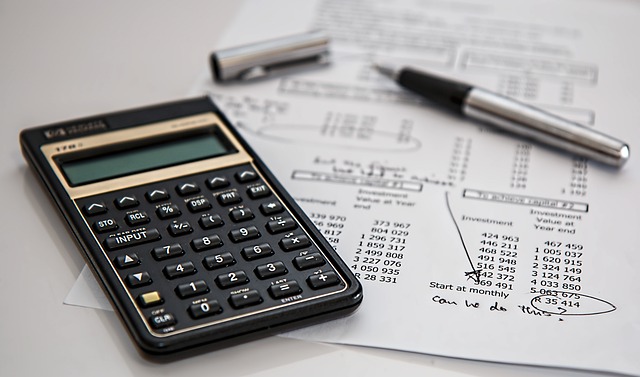The forex market is known for its high liquidity and volatility, which creates a vast number of trading opportunities using these forex trading strategies. Remember the enormous profit potential, making the currency market attractive for global traders.
The fast-paced price movements happening in currency pairs are measured in pips, and the number of pips you gain in a trade determines your profitability. You can use a pip calculator to convert the pip value into the currency you want to trade in. The key ingredients for success in the forex market are logical calculations and a sound trading plan.
Why do you need a Forex Trading Strategy?
A beginner stepping into the forex market will be overwhelmed by all the constant price fluctuations, and this can result in a lot of confusion. You will feel directionless and will be unable to decide the best course of action to take as a trader.
But this dilemma can be avoided by understanding the market enough and devising a suitable strategy. A forex trading strategy is a rule-based system that guides all your decisions and actions as a trader.
It will cover all the key details, such as the method of analysis to find the best trade setup, how to decide the entry point, and at what price you should exit the trade for a profitable outcome.
You can also use a profit calculator to assess the possible returns from a trade and plan the trade based on the expected results. Having a strategy saves you from the ambiguity and risk of forex trading as you will be clear about the path you need to walk on as a trader, saving you from common trading pitfalls.

The process of building a trading strategy from scratch can be a tough one for an average beginner. But you can make things easier by doing extensive research about beginner-friendly forex strategies and testing them on a demo trading account.
This will help you understand how a trading strategy works, and you will be able to identify what type of strategy will suit you as a trader. Then, you can get into the process of developing your trading strategy.
Now, let’s look at the 4 simple steps you can follow to finalize your strategy and make it work in your favour.
Define your Trading Goals
The first step in building a profitable trading system is identifying and defining your trading goals. You need to be clear about the things that you want to achieve as a forex trader. Your expectations for profits need to be converted into well-defined targets, and they need to be time-bound.
The goals you set need to be realistic and practically possible. We often see new traders entering the market with high expectations and goals, which are sometimes impossible for beginners. Thus, you must assess your skills and capabilities while deciding your goals.
A vague goal will only be helpful in your trading journey if it gives you a sense of direction, which is the very purpose of setting a goal. You should also think about the means for achieving these goals or profit targets, as you will have to work on these aspects while framing your trading strategy.
Those who have enough knowledge about the market and currency pairs will be able to set attainable trading goals. Hence, you need to work on enhancing your knowledge and skills before finalizing your trading goals.
One tip that I can give you here is to connect your goals with the trading process rather than be obsessed with the end results. You might be thinking about solely focusing on the results, but this approach may not work for a newbie trader. You need to plan for getting the desired results but pay more attention to the progress you make as a trader.

You may not get the expected trading results in the initial phase as you are still a learner without prior experience. Hence, you need to set your goals around what type of trader you want to become, and then you can add the profit targets to function as an outline for your trading plan.
Choose the Right Strategy
Choosing the right strategy is essential to unlock trading success, but it can be challenging for a beginner with all the options to choose from. There are a lot of different and distinct strategies that you can follow as a trader, and choosing the most suitable one has a lot to do with your trading goals, risk tolerance, trading schedule, personality, and skills that you have as a trader.
All of these aspects play a key role in the profitability of your trading system; thus, you need to evaluate the pros and cons of different strategies before finding the best one for yourself.
One strategy can work well for some traders, but it may not give the same results to everyone. You need to accept the fact that the suitability of a strategy is subjective, and a trader needs to work on tailoring the strategy to suit their needs and requirements. You can use various automated trading tools to understand the key metrics that shape your strategy.
Your strategy should cover a lot of aspects like your entry point, exit point, duration of trade, potential profit, risk of loss, probability of winning timeframe, and method of analysis for finding the best trade setups. To be more specific, you can consider popular strategies like trend trading, breakout trading, and 20 pips per day strategy and customize them as per your preferences.
Backtest and Optimize
Once you are clear about the strategy you can follow as a trader, you need to backtest this strategy and optimize it to detect and remove any shortcomings. For this, you can make use of the backtesting feature on your trading platform, which allows you to place hypothetical trades using historical market data.
Then, you can evaluate the results and see if the strategy can work or not. If your strategy is working, you can start testing different trade scenarios and assess its viability. You may still find some weak spots in your strategy and can try fixing them to optimize the performance of your trading system.
You can also test this strategy on a demo account, which is ideal for evaluating your trading plan in real-time market conditions. Both backtesting and demo account trading is risk-free, which allows you to experiment and explore different trading techniques to find the best one.

Demo accounts can also be used to polish your trading skills, preparing you for actual trading later on. Testing your strategy on a demo account is also referred to as forward testing, as it allows you to assess the viability of your strategy in the present market situation.
Planning for Risk Management
No matter how much you work on perfecting your strategy, you can always avoid the market risk that occasionally causes you to encounter losses. You need to plan for the worst-case scenario in advance, and for that, you need to come up with a risk management plan.
Setting a risk/reward ratio, limiting your risk per trade by optimal position sizing, and using limit and stop loss orders are some of the key aspects of risk management in trading. Setting a stop loss in every trade is important to cut down your potential losses if the market moves against you.
Sometimes traders settle for a strategy with a high win rate, but the risk/reward ratio is just 1:1. In this case, you will not be making much in your winning trades, but your losses will be the same amount as your profits, which may limit your trading account from growing to a bigger scale.
Thus, I will suggest you go for a 1:2 risk/reward ratio or higher for making decent profits even with a low win rate. Your risk management plan must be devised per your risk tolerance. Those who have a low-risk appetite should never take excess risk in a trade.
The secret to success
You may still be wondering if trading success is just about the strategy you choose or if it is about luck, as sometimes traders fail despite having a solid strategy. There needs to be a better strategy to follow to guarantee trading success, as how well you implement this strategy determines the results you get with it.
Sometimes, traders deviate from their strategy and make poor decisions under the influence of emotions. Thus, a disciplined approach is essential for success.













Such a fantastic information. This is honestly very useful for bloggers